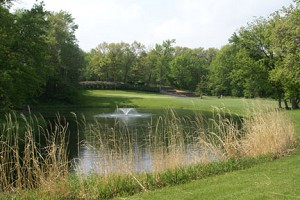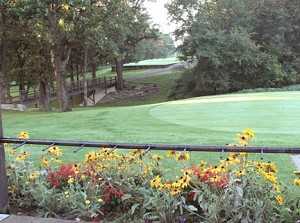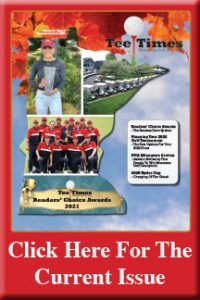Hidden Greens Golf Course – Hidden Seek
By E. Nolan
The name of this course says a lot about it. It tells you about the seclusion – about the sounds of silence and natural beauty you know you’re going to find in “Southern Minnesota’s Brainerd.” (It’s located in a game refuge. No intruding homes.) The title also tells you about the design of the course and the fact that not everything is right out there in front of you. You have to find it.
That’s in the name. What isn’t in the name is that Hidden Greens is a shot-maker’s course. If your game is all about the driver, you’re in trouble. If you’re either good at shooting straight or a master of recovery, you’ll be fine. I love the fact that nearly every shot requires some consideration, some level of skill to end up with a satisfactory result. This is one of those courses that levels the technology playing field. It doesn’t matter if you’re playing with Hickories or NIKEs, you’ve got to hit the shots right.
Joel Goldstrand designed a billion courses in Minnesota, give or take seven, but few of them are as intricately woven as Hidden Greens. Few of them took so much calculation, so much effort in design, to find just the right routing. And few of them gave him so much time to perfect them. (See next paragraph.) One of my golf design instructors at the University of Wisconsin told me that Joel’s middle name should have been “Dogleg” because, in his opinion, no one makes more frequent (or creative) use of them. That is certainly the case at Hidden Greens.
The history of the course is almost as interesting as the design. Designed in 1976 as a nine-hole course it has, as GM and Superintendent Jason Swanson says, “matured gracefully.” He should know, his parents built and own the course. A decade later a second nine was added. It has been maintained with pride, and kept alive in the Swanson family ever since.
Jason believes the greatness of the course is in the details, before you even get out onto the course. It’s in the calming atmosphere around the clubhouse, where the smells and sounds of nature tell you you’re somewhere special. It’s even in the scorecards, which were “assembled” with “special care,” from the artistic cover to the hole-by-hole descriptions and course map. There’s even a separate scorecard for Junior Golf. They earnestly want for this course to be loved equally by every age and skill level, and their efforts are regularly rewarded by customer praise. On my last visit, a couple stopped me in the parking lot and said, “We hear you’re writing a story on this course.” I nodded. “Make sure you talk about the Swansons.” “No problem,” I assured them. I’d already been told that twice by other people.
The Swansons, on the other hand, wanted more attention paid to the course. That too is easy for me. The camp-like log cabin atmosphere surrounding the patio and clubhouse smoothly transitions out onto the course. The Swansons claim “nature” as Hidden Greens’ best asset. It’s hard to dispute that. There are a million trees – for better or for worse – serving as hallway walls for beautiful green fairways, and curtains for concealed hazards and greens. We like to talk about great three-hole stretches at the magazine, but Hidden Greens even one-ups that. Their four-hole stretch from #6 to #9 is most memorable – from the three-tree statue to the gorgeous downhill par 3 (over a river) to the signature 8th with it’s snaking water hazard and the bookend 9th, an uphill par three with some pretty precarious pin placement possibilities.
Don’t let that front-focused praise fool you into thinking the back is any sort of slouch. Holes 12 and 16 essentially shake hands adjacent a beautiful fountained pond cutting in front of 16’s green. You just can’t ignore, or escape all the beauty around here. I could sit on 16 for hours. Jason Swanson says he sometimes does. I get it.
But for all the accolades perhaps what I appreciate most about Hidden Greens is the true spirit behind it. It was always intended as a family and friends meeting place – a natural playground for the game the Swanson’s love. “This is our home,” Jason says. “We hate leaving it even for a little and we appreciate it even more when visitors love it as much as we do.”

Hidden Greens #16







